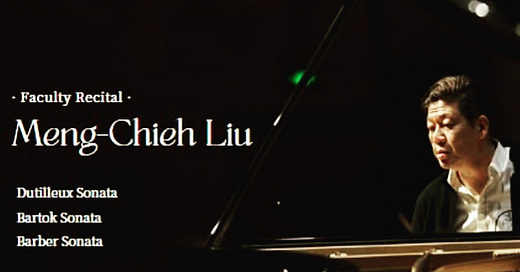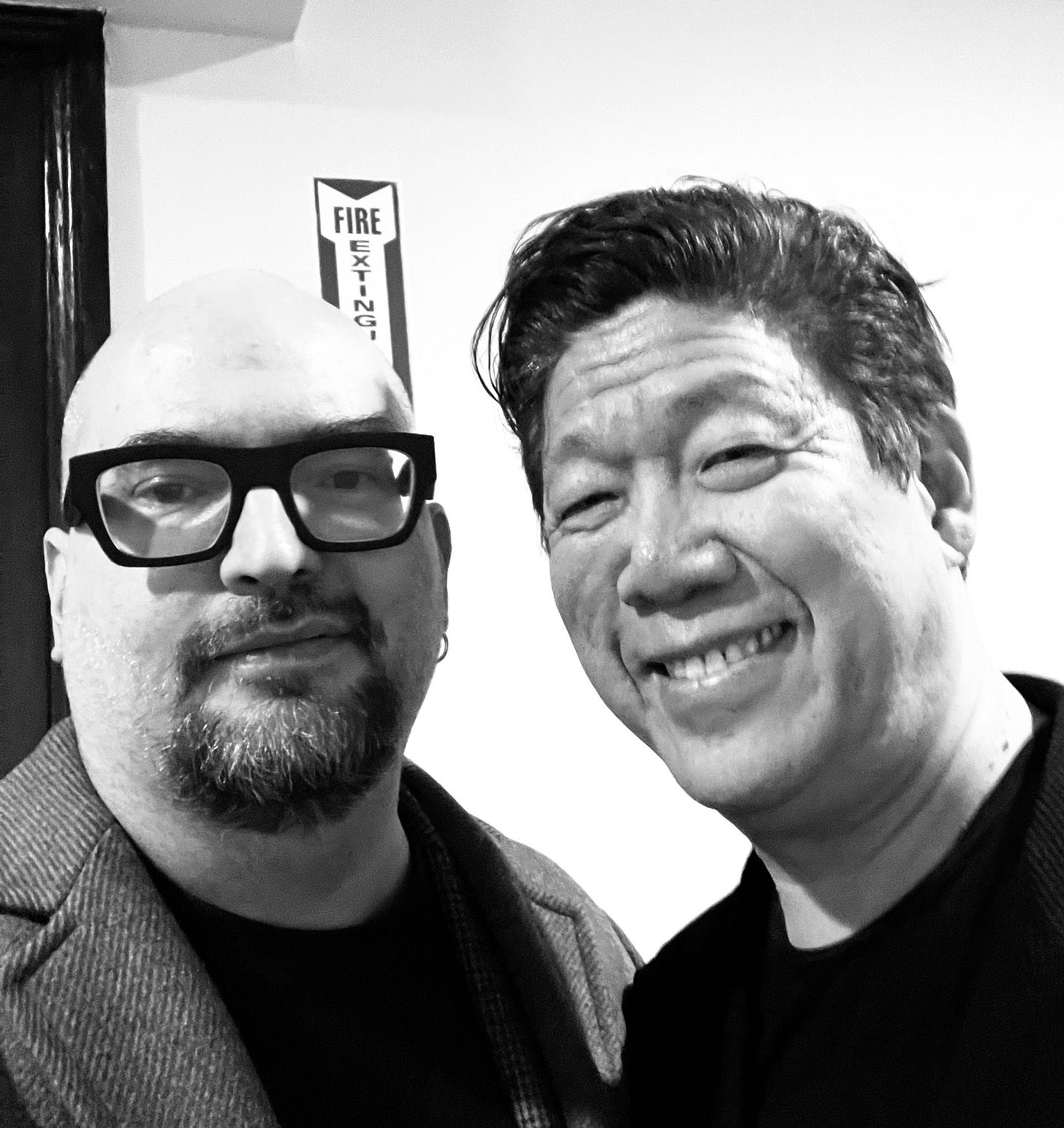TT 485: Piano sonatas by Henri Dutilleux, Bela Bartók, and Samuel Barber
Meng-Chieh Liu in Concert
Meng-Chieh Liu programmed three of the best 20th-century piano sonatas for a concert in Jordan Hall last night. He started with a brilliant and epic traversal of Henri Dutilleux’s Sonata (1948), took an intermission, and then continued to storm the heavens with sonatas by Bela Bartók (1926) and Samuel Barber (1949).
Together the pieces gave a telling overview of a certain area of the repertoire. They are all grand and pianistic, with virtuoso octaves and brilliant passagework. They are all tonal, although there are many moments to challenge conventional harmonic analysis. And they are all immensely successful: the rhetoric speaks clearly. The audience has no problem “getting it.”
Liu could handle the major technical demands; more importantly, he also made sense of these big canvases in a natural and unfussy manner. Usually a pianist would program just one of these major works, not all three together. Liu also played the whole concert from memory.
A major triumph.
I can’t say I really know Meng-Chieh but he was Reid Anderson’s roommate at Curtis over 30 years ago and I met him then. The maestro graciously let me take a selfie after last night’s concert.
I was at New England Conservatory also to teach, and used the openings of the slow movements of the three sonatas to demonstrate compositional approaches.
The Barber slow movement vamps for two bars before becoming somewhat like a Chopin nocturne in pianistic layout. None of the students could guess the harmonic language of the opening vamp, but I cheated and read a book on Barber: It is 12-tone. I don’t know exactly what Barber is doing with the full chromatic aggregate, but there are vaguely dodecaphonic moments throughout the sonata, most obviously in the slow moment.
“Chopin meets Schoenberg.”
Most slow movements are lush, but the Bartók sonata offers something rather different. When I asked the students to describe this emotion, they mentioned words like “removed,” “dark,” and "bitter.” I agreed, but also went one further, and suggested that composer was expressing something akin to nihilism. When the melody finally begins for real, it is a way to stagger out of the existential.
(I improvise the rhythms at the end of the excerpt because my computer screen shifted to a screen saver and quit showing me the notes. Sorry, Bela.)
Unlike the other two, the Dutilleux has a key signature, and if one were to play the left hand alone, it would display an even plane of tonality. The melody is dissonant and syncopated, and therefore I think it is actually Dutilleux’s version of the blues. A very Frenchy-French blues — a “Ravel imitating Gershwin” kind of blues — but a shade of blues nonetheless.
My students gave my blues conceit a mixed reception.
(Oh dear, I made one melody a bit more syncopated than notated, and didn’t even notice until now. Sorry, Henri.)
The morning began with my first student storming in and declaring that Dutilleux was plagiarizing Messiaen in the last movement. I see what they mean, and in fact Dutilleux was still very young and soon stopped composing in exactly this manner, so the charge may have some merit. However, I perceive it more nationalistic terms. One axis is the French octotonic scale, Ravel to Messiaen to Dutilleux. Another is the Eastern European folk tale, from Liszt to Bartók (and his friend Kodály) to Ligeti. Barber is more frankly European than many mid-century American composers, but the concluding fugue of his sonata is jazzy and syncopated, with vamp section in C minor that foreshadows McCoy Tyner.
For those wishing to listen to complete sonatas: Martha Argerich for Bartók, Geneviève Joy for Dutilleux, and Vladimir Horowitz for Barber.








The Barber falls into an interesting subcategory of tough-minded pieces by composers undervalued as soft and not rigorous. (I love a lot of Barber, things like Summer Music for wind quintet (great free performance at Trinity Church Wall St., a few years back, the West Point wind quintet, a subset of their larger ensembles, and Knoxville: Summer of 1915--Eleanor Steber commissioned it, and her recording remains the gold standard.) As for the more steely-backed pieces in the supposedly softie 20th century American tradition, also essential are a few Copland works of his early period, chiefly the Piano Variations, a 12-tone piece with a few bars of stride (?) piano at roughly midpoint. Copland was a pretty good pianist, and this was one of his show-stoppers. I doubt he was one of Arnold Schoenberg's favorite composers, but he thought very highly of these variations. (And it wasn't just 12-tone pieces. Schoenberg had a much broader appreciation of a vast range of music that was nothing like his than most people realize -- he dug Gershwin and Poulenc and a lot of other guys.) I don't spend a lot of time listening to Arnold the S., but a great experience of a few years ago, in a series of jazz reinterpretations of his music, at the Austrian Cultural Forum--you have to sit in the balcony to catch the whole experience--Vijay Iyer with Steve Lehman and Tyshawn Sorey, some great shenanigans including spinning little jangly toys on the tom-tom and special guest addition Jose Davila on tuba for the last cut.
The Cleveland Orchestra will perform Dutilleux’s cello concerto Tout un monde lointain… this weekend. You will probably be able to catch it via internet radio at 4PM EST some upcoming Sunday (I'm guessing later in April). Check for it to appear in the listings found here: https://www.ideastream.org/upcoming-cleveland-orchestra-concerts-on-wclv